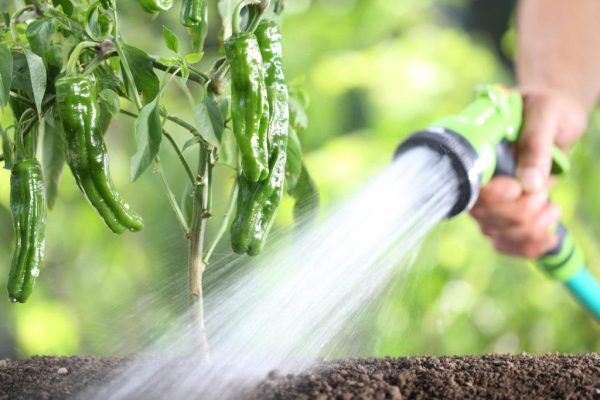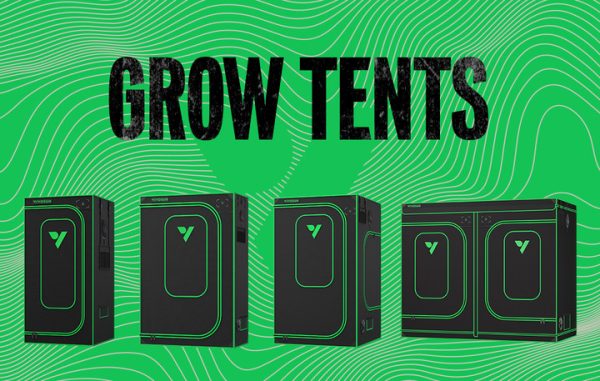In the world of indoor gardening, grow tents have emerged as indispensable tools, creating controlled environments to nurture plants with precision. When it comes to selecting a grow tent, there’s a choice to consider between roof-shaped and rectangular tents. Each shape offers distinct advantages and considerations, catering to different preferences and requirements. Let’s delve into the key aspects of each type to help you make an informed decision for your indoor garden.
Roof-Shaped Grow Tents: Maximizing Vertical Space – Choosing a Grow Tent
Roof-shaped grow tents feature sloped sides that meet at the top to create a tent-like structure. These tents bring forth a range of benefits that might align well with your gardening goals:
Vertical Growth Space: With their angled sides, roof tents provide more vertical space at the peaks, making them suitable for taller plants or those with vertical growth patterns.
Efficient Space Utilization: The slanted design efficiently utilizes unused vertical space, making it a smart choice for areas like attics or lofts. And for individuals with bad backs, these tents prove to be a game-changer. Being able to step inside the tent and stand up comfortably can significantly reduce strain during cultivation activities.
Unique Aesthetic: The unconventional shape of roof tents stands out, infusing a modern and eye-catching style into your indoor gardening space.
However, it’s crucial to weigh these advantages against potential drawbacks:
Complex Setup: Roof tents might require more intricate assembly due to their angled poles and walls, demanding careful attention during setup.
Higher Cost: On average, roof-shaped tents tend to come with a higher price tag compared to their rectangular counterparts of similar sizes.
Limited Horizontal Space: The tapered sides can limit the horizontal space available for spreading out your plants, affecting how many you can cultivate.

Rectangular Grow Tents: Maximizing Floor Area – Choosing a Grow Tent
Rectangular grow tents, characterized by straight walls and sharp corners, offer their own set of advantages for indoor gardeners:
Optimized Floor Area: The flat walls of rectangular tents maximize the interior floor space, allowing for more containers and the cultivation of multiple plants side by side.
Economical Choice: These tents typically cost less than roof-shaped alternatives, offering ample indoor gardening space without breaking the bank.
Storage and Configuration: The flat roof of rectangular tents provides a convenient space to store light items that are not in use, such as germination trays, heat mats, extra grow bags, and more. This not only keeps your gardening area organized but also makes essential tools easily accessible when needed.
Disadvantages:
Ventilation Concerns: The lack of slanted sides might hinder air circulation, potentially leading to warm air getting trapped at the top of the tent.
Basic Appearance: Rectangular tents have a more utilitarian appearance, lacking the unique aesthetic flair of roof-shaped tents.
Vertical Limitations: Due to their flat top, the usable maximum height is restricted, particularly when growing taller plants.
Making the Right Choice – Choosing a Grow Tent
To determine the ideal shape for your indoor grow tent, consider these crucial factors:
Plant Height: Evaluate how tall your plants will grow and if extra vertical space is necessary. Keep in mind that you need to consider actual usable height, not just the tent’s peak.
Price and Aesthetics: Though roof tents are more aesthetically pleasing, they often come at a 20-30% higher price tag.
Available Space: Consider the dimensions of your growing area and how the tent’s shape will fit within it.

Conclusion: Selecting the Optimal Grow Tent Shape – Choosing a Grow Tent
Choosing between roof-shaped and rectangular grow tents involves a careful evaluation of your plant’s needs, available space, and personal preferences. Each shape offers its own set of advantages and considerations, and by aligning these factors with your goals, you can create an environment that nurtures healthy plant growth.
Moreover, for those seeking to optimize their indoor gardening experience, it’s recommended to explore advanced cultivation techniques. Techniques like trellis netting and the “scrog” method, which involves training plants to be shorter while spreading them out, ensure optimal light exposure for all parts of the plant. This approach counters the light drop-off effect from top to bottom, enhancing overall plant health and yield quality.
In the end, the choice between roof-shaped and rectangular grow tents is a decision unique to your indoor gardening journey. By combining the right shape with effective techniques, you can achieve impressive yields, fostering a thriving indoor garden that reflects your commitment to nurturing green life within the confines of your living space.
As always if you have any questions you can message our Instagram or Facebook and we’ll be glad to help you out! Join our Facebook farmer’s community for even more exclusive contests and prizes!
Subscribe to the VIVOSUN newsletter for growing tips, grower stories, and special offers, and get 10% off your first order!
We love the new VIVOSUN Smart Grow System and we are certain that you too will love it once you try it.





